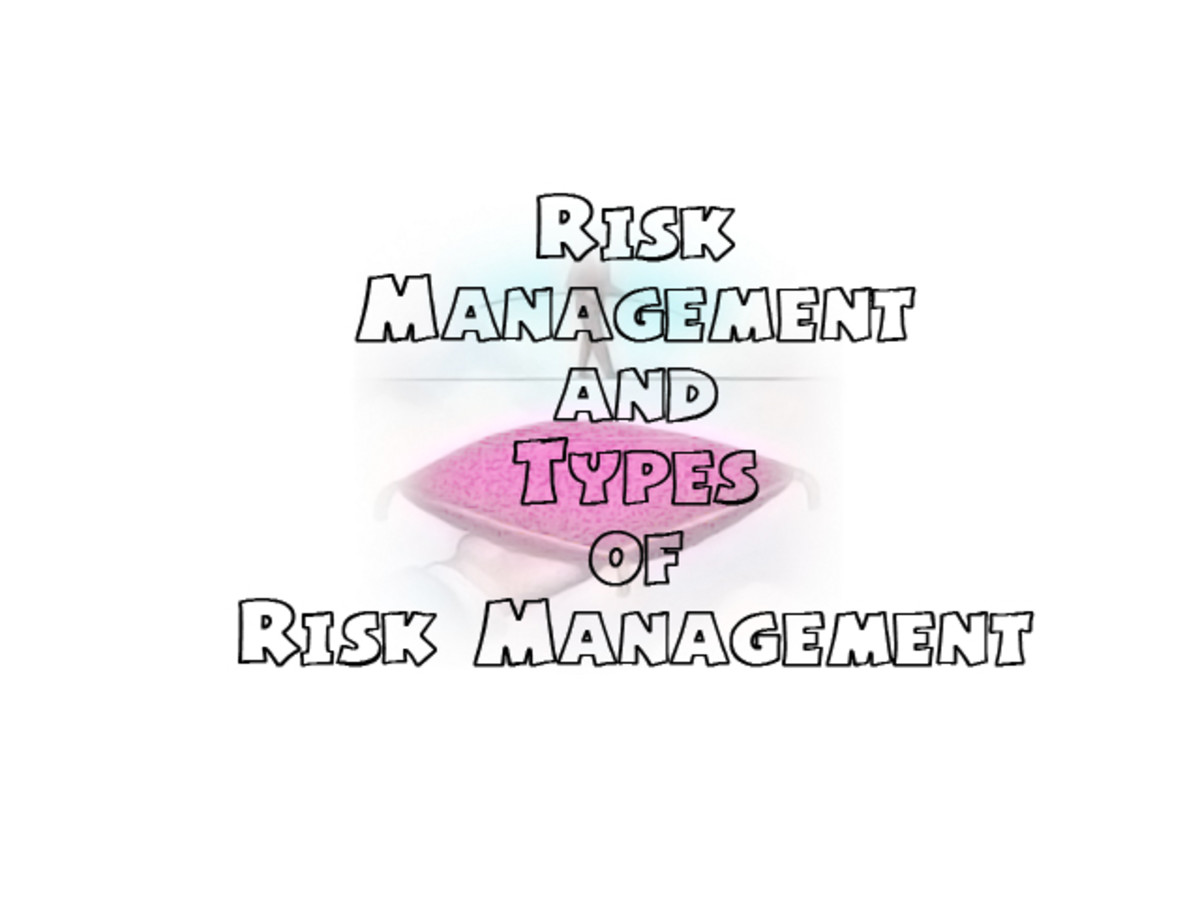Principles and Process of Risk Management
Principles of Risk Management
The principles of risk management have been set by several organizations. These principles are set by the Project Management Body of Knowledge and the International standardization Organization.
The Project management body of knowledge has set down some principles. This article is a combination of the principles laid down by both the bodies. The principles are as follows:
Risk Management Principles
Organizational Context: Every organization is involved by different degrees and aspects in the social, legal, political, societal and technological environments. For example, an organization may be unaffected to any changes taking place in import duty while another organization who is working in the same environment and industry may be severely affected. There are also some noticeable differences in the channels of communication, procedures of risk management and the in-house culture. Hence, organizational process must be given additional value and also be an important part through the use of risk management.
Involvement of Stakeholders: Stakeholders must be fully involved in every level of making decisions in the process of risk management. They must be fully alert even while making small decisions. Hence, the stakeholders can play an important role in every step and the organization must understand that this is in their own interest.
Organizational Objectives: Keeping the organizational goals in perspective is very vital when dealing with risk factors. The process of risk management must clearly be able to tackle even the uncertain issues. Hence, it is necessary to be very thoroughly prepared keeping the master plan in mind.
Reporting: Risk management involves the use of communication. The genuineness of the information has to be determined. Decisions must be prepared based on readily available information and it must be clear and lucid.
Roles and Responsibilities: Risk Management has to be clear and all encompassing. It must involve the human aspects and make sure that all the members are aware of their role at every step of this process.
Support Structure: The significance of the risk management team is emphasized by the support structure. The members of the team must be energetic, industrious and highly receptive to any new changes made. All the members must be aware of his role at every step of the project management life cycle.
Early Warning Indicators: It is important to keep a sharp eye on untimely signs of any risks which may become a real problem. This can be tackled by continuous communication by everyone at all the levels. It is also vital to facilitate and authorize all the members to deal with the risk at his/her stage.
Review Cycle: It is important to continue assessing all the inputs at every level of the process of risk management – Identification, assessment, respond and evaluate. Each cycle has visibly different observations and the realistic interferences must be identified and the needless ones must be removed.
Supportive Culture: Devise a brainstorm and permit asking questions and discussions as a routine culture. This will encourage the members to take an active part.
Continual Improvement: You must be able to progress and augment all the approaches and schemes of your risk management. You must use your knowledge to focus your methods of viewing and managing the continuing risk.
Risk Management Process
There are many associations and bodies which set down the guidelines and principles in the risk management process. The steps are more or less similar and may have some minor changes in the cycle in various types of risk.
The various risks that are involved, for instance, in project management differ when compared to financial risks. This is the reason for some changes taking place in the whole process of risk management. On the other hand, the ISO set down some steps for these processes and they are generally valid for almost all types of risks. These guidelines are applicable for any organization forever and even for many various activities which include operations, functions, products, processes, decisions, services, projects and even assets.
According to the ISO 31000 (Risk Management - Principles and Guidelines on Implementation), the process of risk management has the below mentioned steps and sub-steps: Setting up/establishing the context, Identification and Evaluation.
Establishing the Context in Risk Management
This is the first step in the Risk Management process. Establishing the Context means recognizing and analyzing all the likely risks and its consequences. Some various schemes are mentioned below along with the decisions in order to deal with the risk. The various activities are divided during this level is as follows:
- Identifying a risk in any specific domain.
- Preparing the complete process of management.
- Making a chart of the risk signs, identifying the goals of risk etc.
- Demarcating a framework.
- Designing an evaluation of the risks that are involved at every stage.
- Choosing the solution/s for the risks.
Risk Identification in Risk Management
This is the second step in Risk Management Process.
Important Risk Management Articles
- Risk Management and Types of Risk Management
Risk management is defined as the logical development and carrying out of a plan to deal with potential losses. The risks can be financial risks, process risks, intangible risks, time risks, human risks, legal risks, and physical risks. - Principles and Process of Risk Management
Risk Management Principles; The principles of risk management have been set by several organizations. Risk Management Process; There are many associations and bodies which set down the guidelines and principles in the risk management process. - Risk Identification in Risk Management
Identifying the risk can be done at the source level or at the level of the problem itself. Source analysis means analyzing the source of the risks involved and the proper measures required for mitigation being kept in its place. - Risk Management Plan Evaluation
Assessing and Analyzing Risk Management Plans; There is no perfect risk management plan but its success depends upon proper management policies, risk analysis, planning and activities. - How to create a Risk Management Plan
Risk management plan is essential to achieve success in a project. The main aim of risk management plan is to predict risks much before implementing the project. - Risk Treatment Plan
An effective part of the risk management plan is called the Risk treatment. The risk management plan lists the strategies on ways to manage the various risks. There is something called as Risk Response Planning that needs to be tackled first before r








